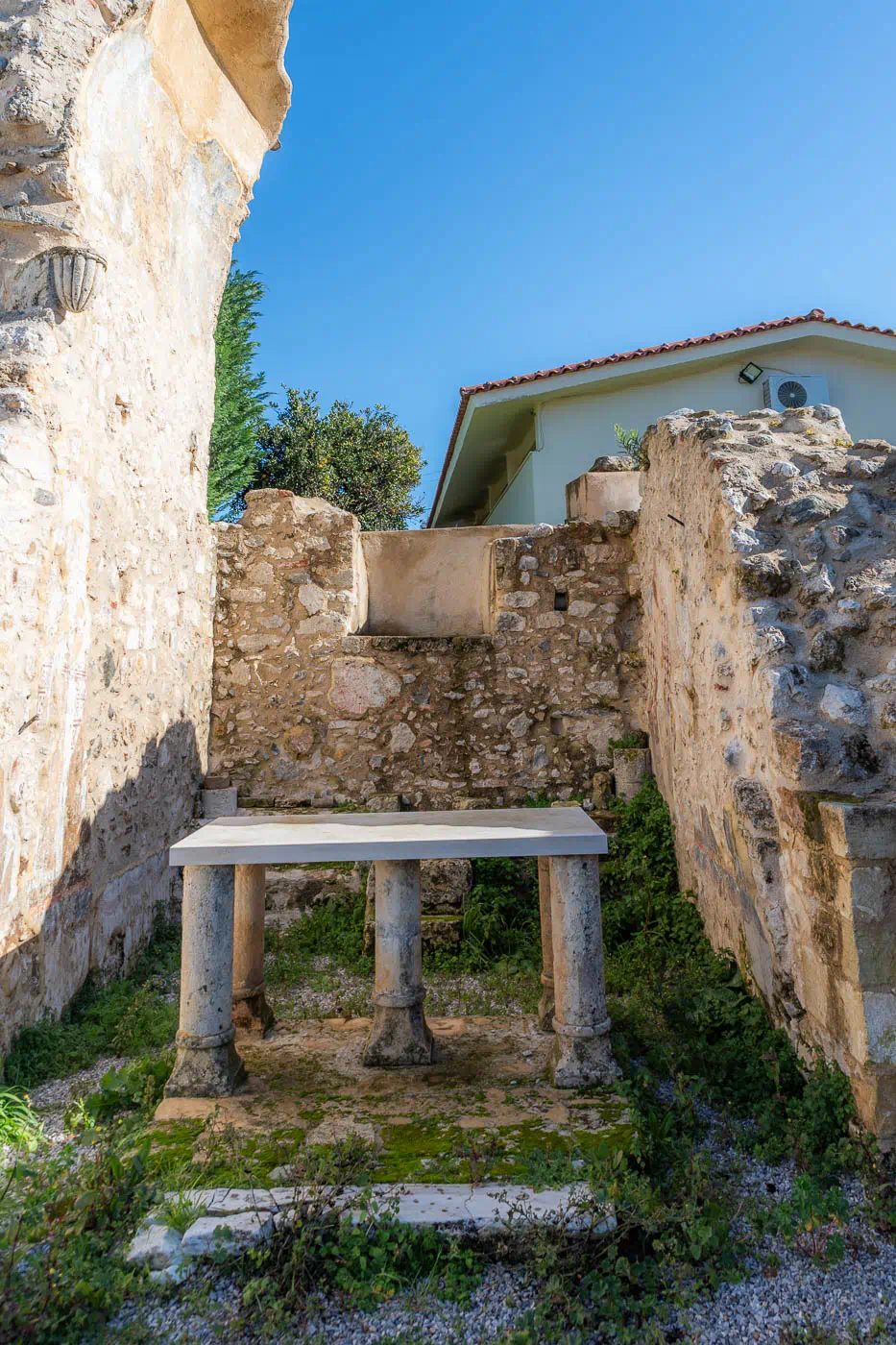
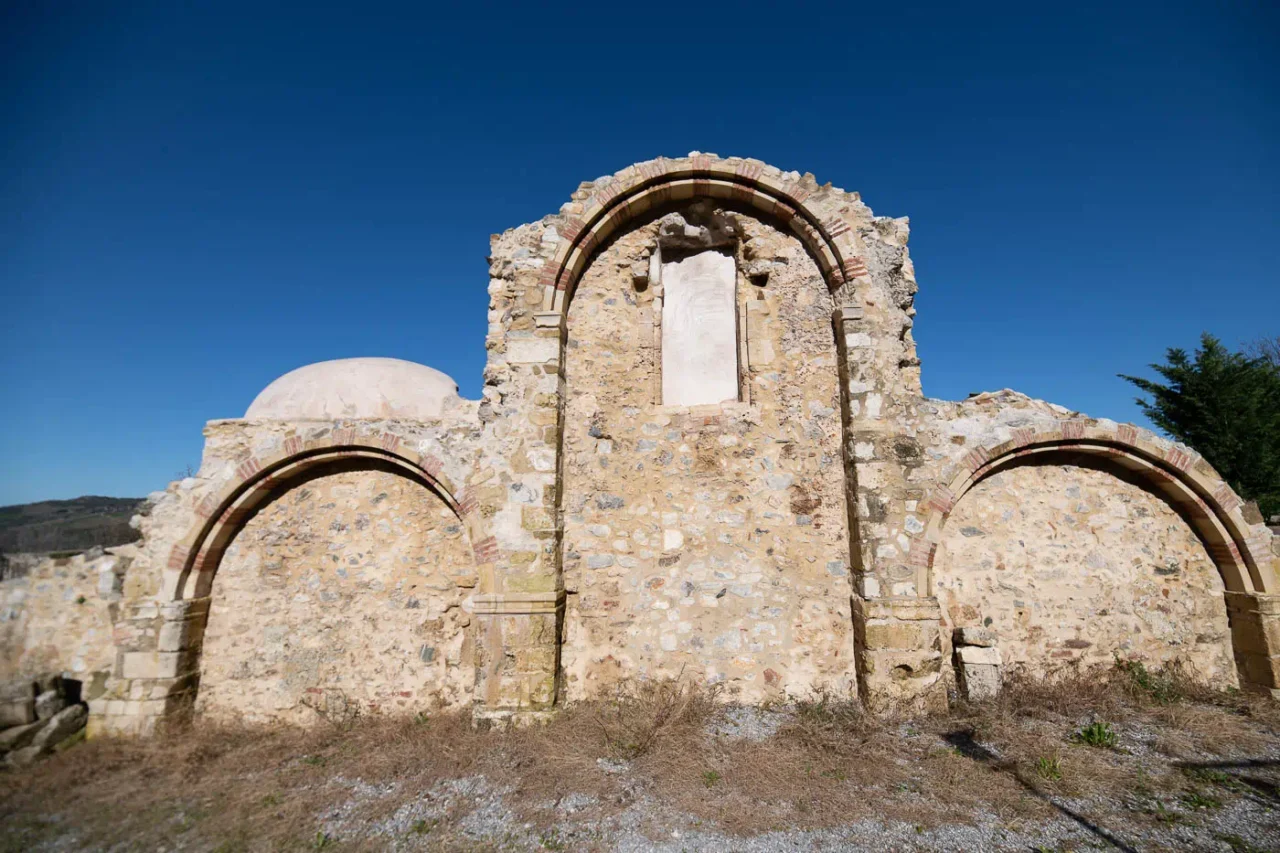
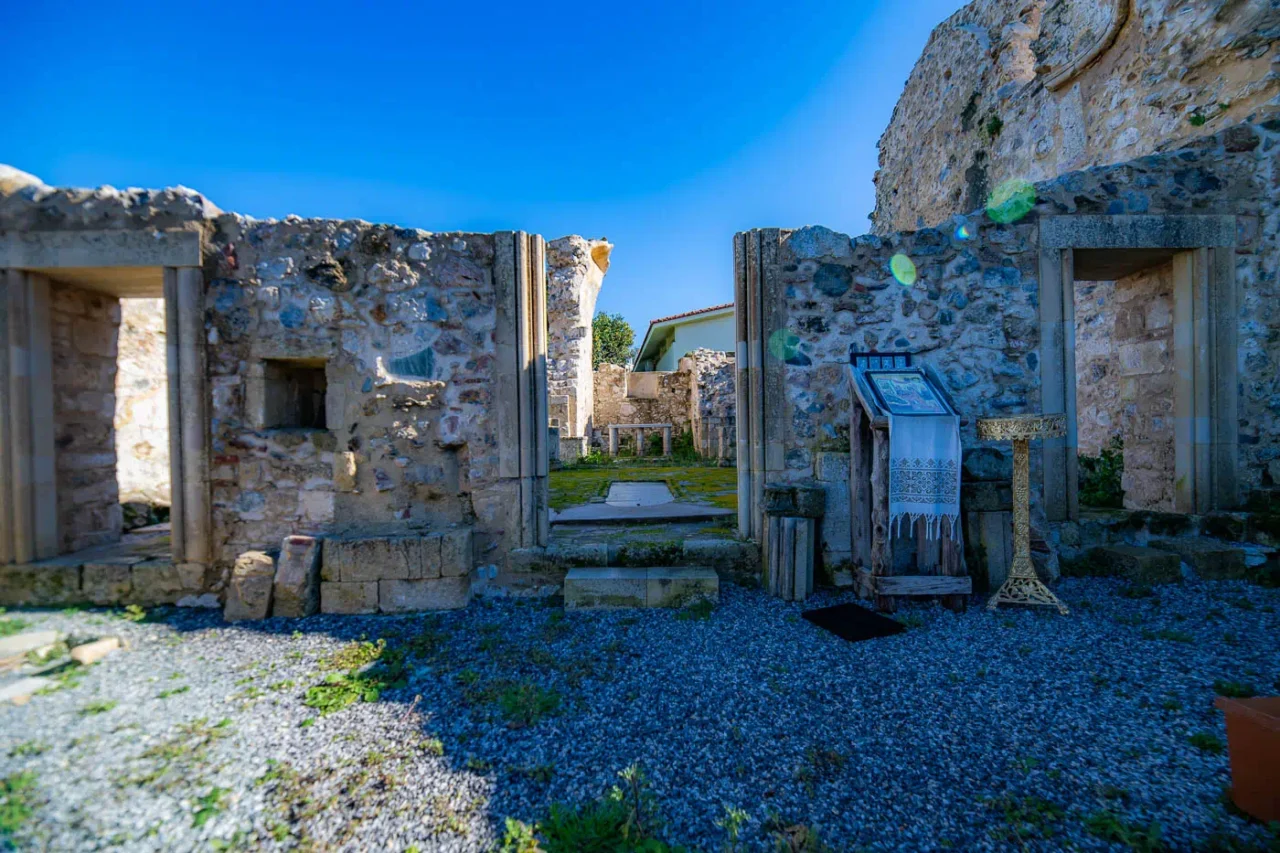
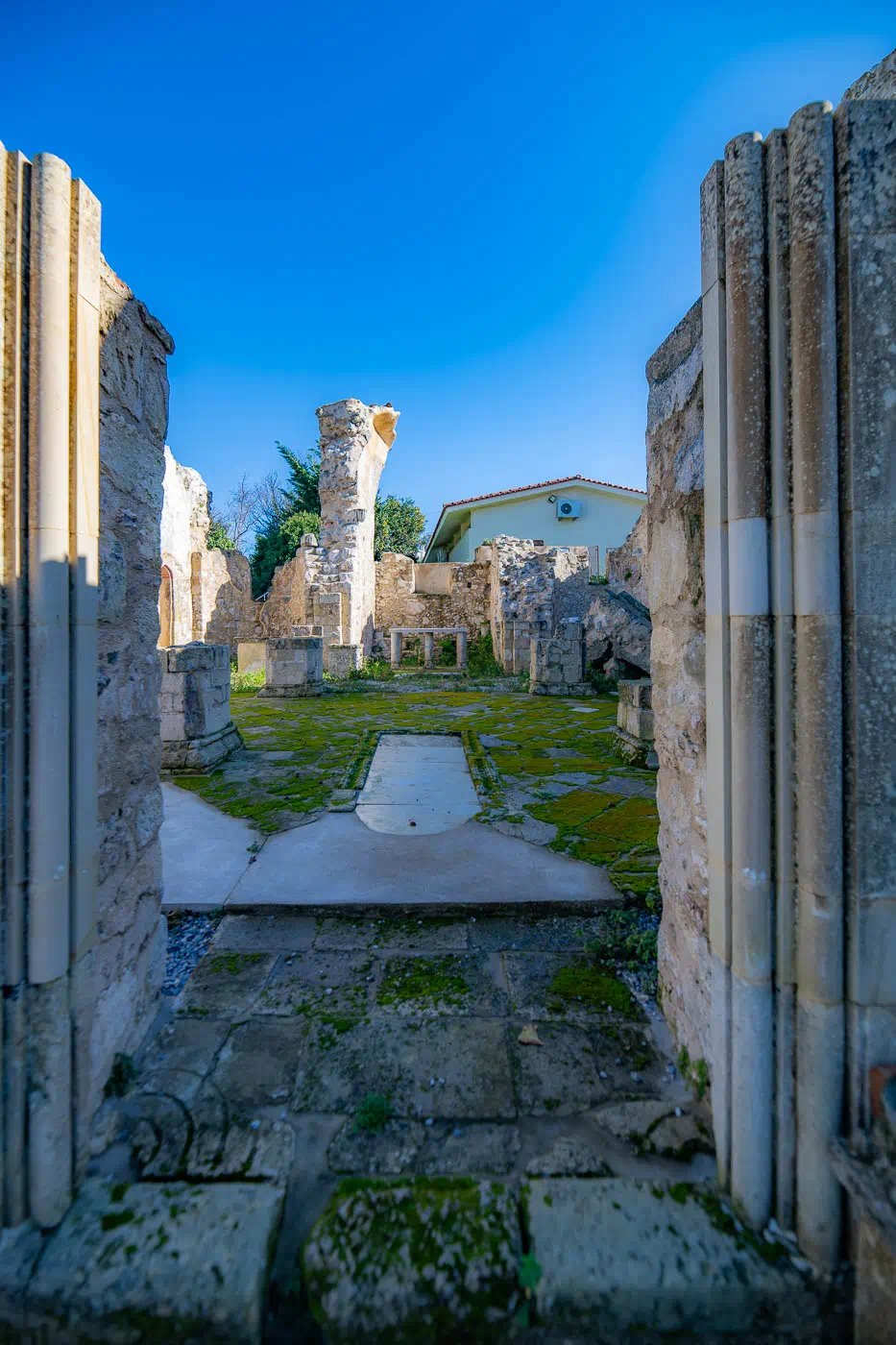

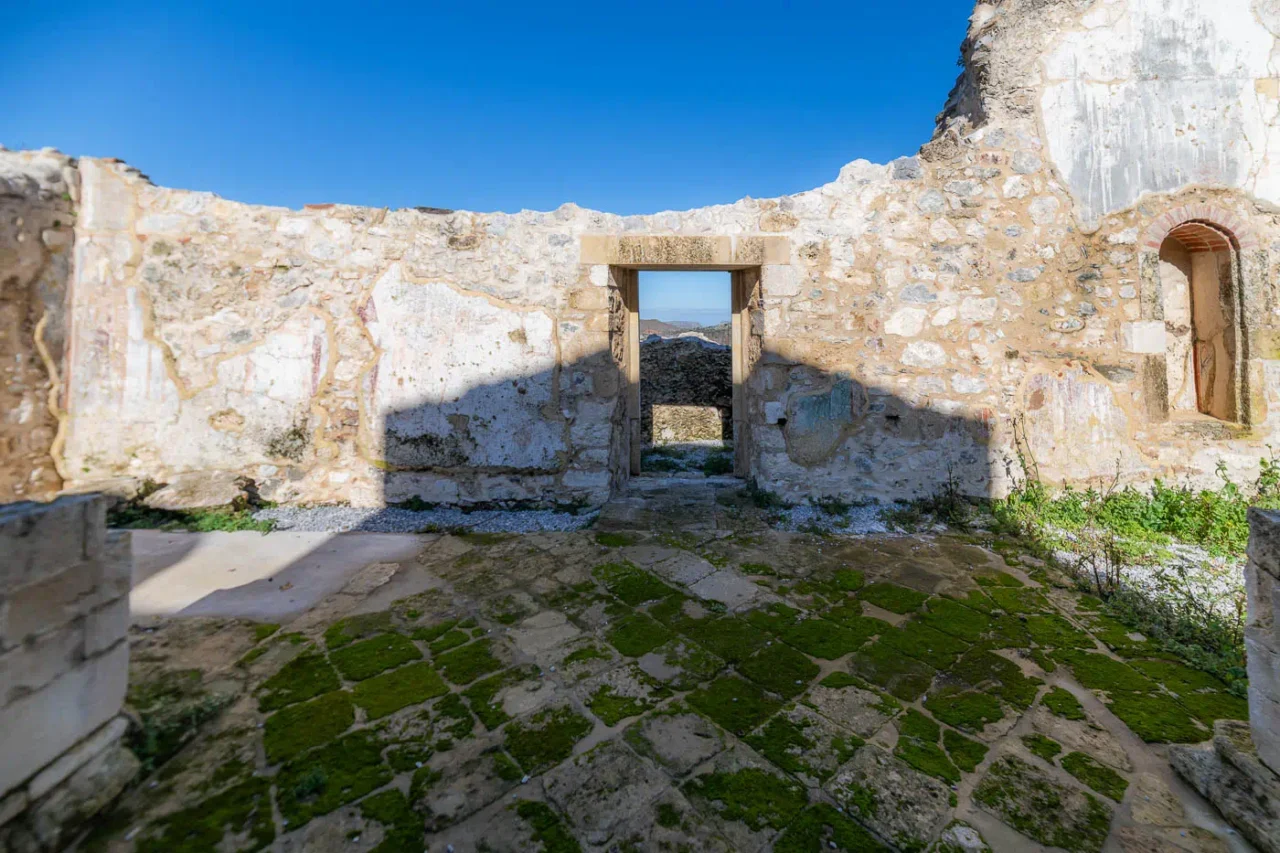
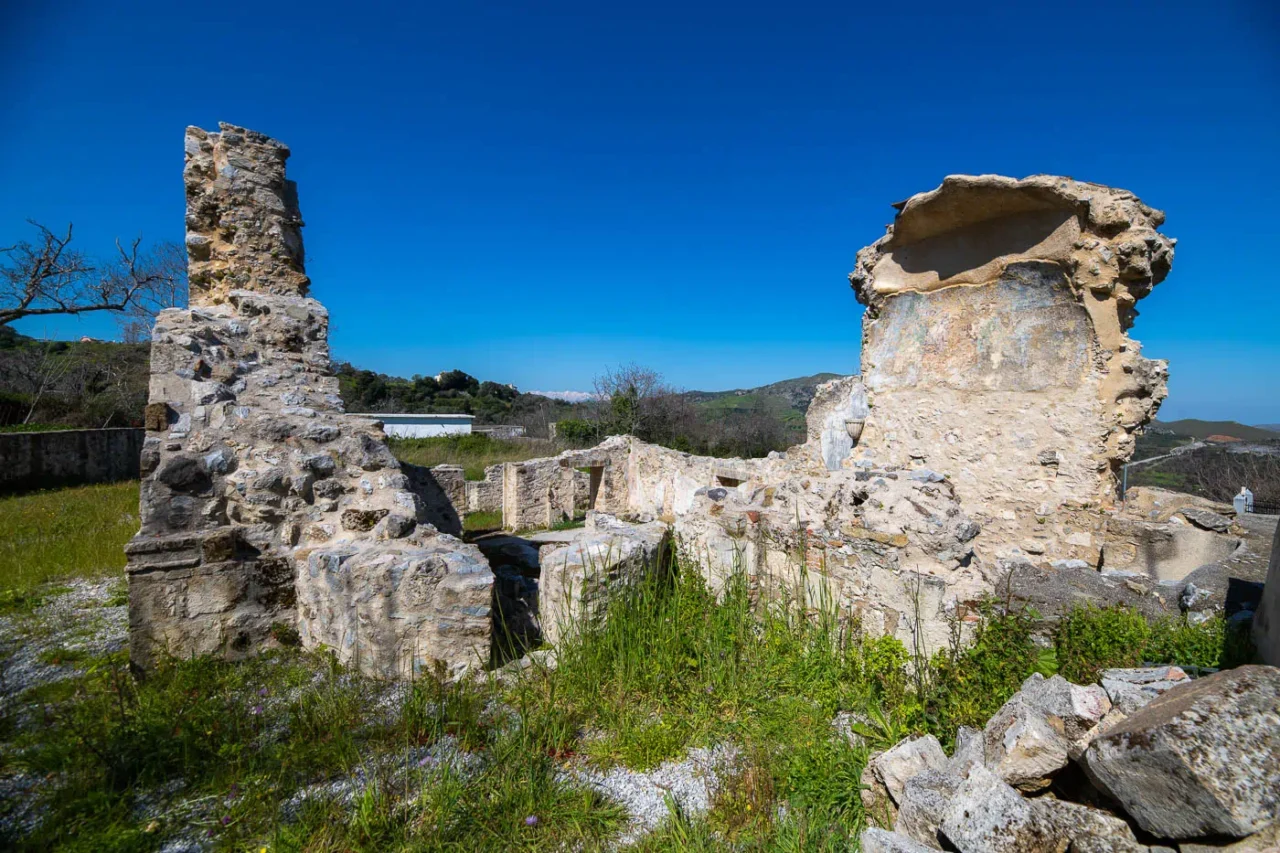
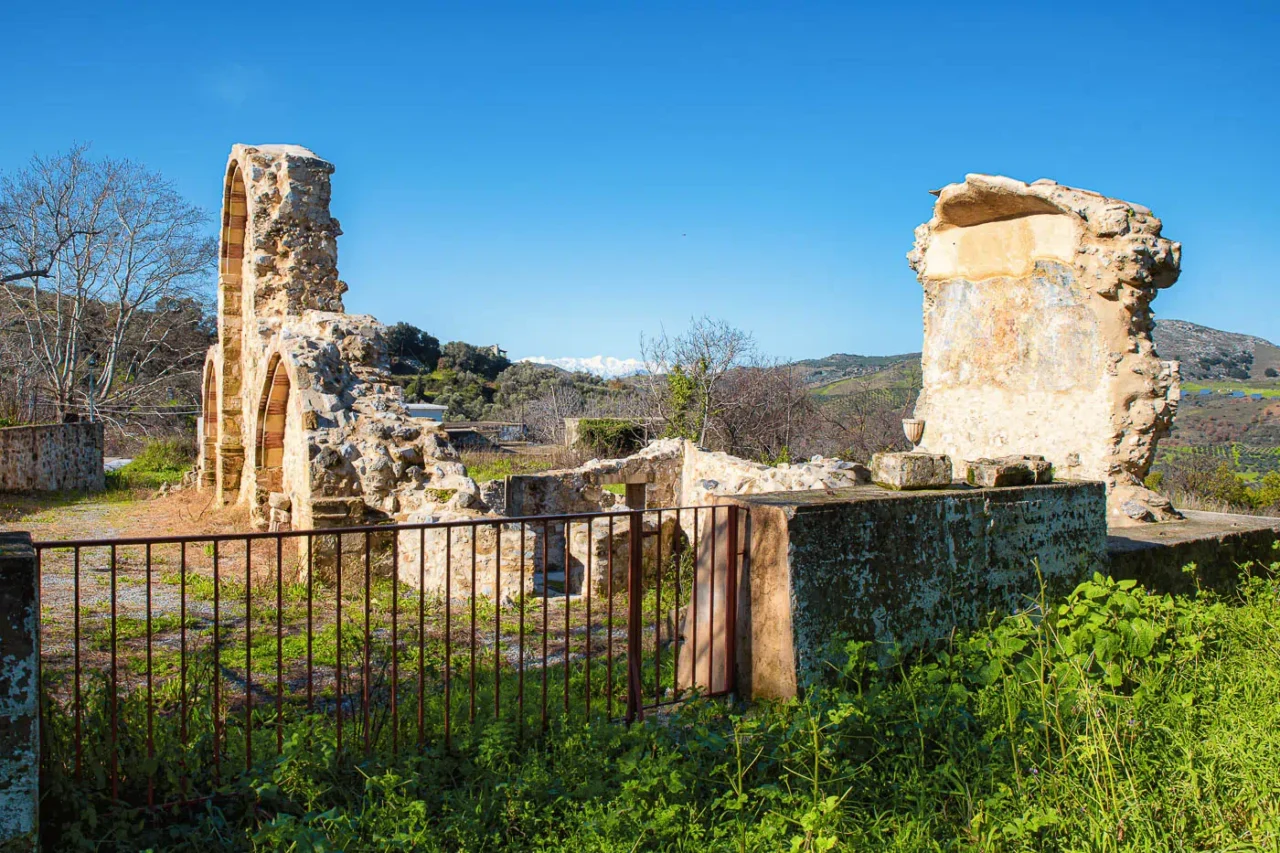
The Church of Panagia in Patsos
The church of Panagia (Virgin Mary) in Patsos, a village nestled in the Amari province of Rethymno, Crete, stands as a significant monument from the Byzantine era. Its architectural and artistic features offer valuable insights into the cultural and religious landscape of Crete during the 14th century.
Architectural Features
The church’s architecture is a unique blend of Byzantine and Western elements, a testament to the island’s diverse cultural influences during the late Byzantine and early Venetian periods. The church’s most striking feature is its large size and complex architectural type, which sets it apart from the simpler, single-nave churches commonly found in the Cretan countryside. The church’s layout follows a cross-in-square design, a popular architectural style in Byzantine churches. This design features a central dome supported by four columns, creating a spacious and well-lit interior.
Frescoes
The interior of the church is adorned with frescoes of exceptional quality, considered some of the finest examples of late Byzantine art in Crete. The frescoes depict a wide range of subjects, including scenes from the life of the Virgin Mary, the life of Saint Nicholas, and the Communion of the Apostles. The central apse features a monumental depiction of the Virgin Mary holding the Christ Child, seated on an ornate throne. The frescoes are not only visually stunning but also provide valuable insights into the religious and cultural practices of the late Byzantine period in Crete.
Construction and Historical Significance
The exact construction date of the church is not definitively known, but scholars believe it was built in the first quarter of the 14th century. This period was marked by relative peace and prosperity in Crete following the Byzantine reconquest from the Arabs in 961. The high quality of the frescoes suggests that they were the work of skilled artists who may have been brought in from a major artistic center, possibly Constantinople. The church’s construction and elaborate decoration likely reflect the patronage of wealthy individuals or families, highlighting the economic and cultural vitality of Crete during this period.
Current State
The church of Panagia in Patsos is currently in ruins, with only parts of its walls and frescoes remaining. The destruction was likely due to a large earthquake, a common occurrence in Crete during the Ottoman period. Despite its ruined state, the surviving elements of the church are enough to attest to its former grandeur and artistic significance. The church’s frescoes, in particular, are considered to be among the finest examples of late Byzantine art in Crete, and their study continues to provide valuable insights into the artistic and cultural traditions of the period.
Key Points
- Construction Period: Likely first quarter of the 14th century.
- Location: Patsos, Amari province, Rethymno, Crete.
- Historical Significance: The church is a testament to the artistic and cultural flourishing in Crete during the late Byzantine period. Its frescoes are of exceptional quality and provide valuable insights into the religious practices of the time.
- Current Status: The church is in ruins, but the remaining frescoes are considered to be among the finest examples of late Byzantine art in Crete.















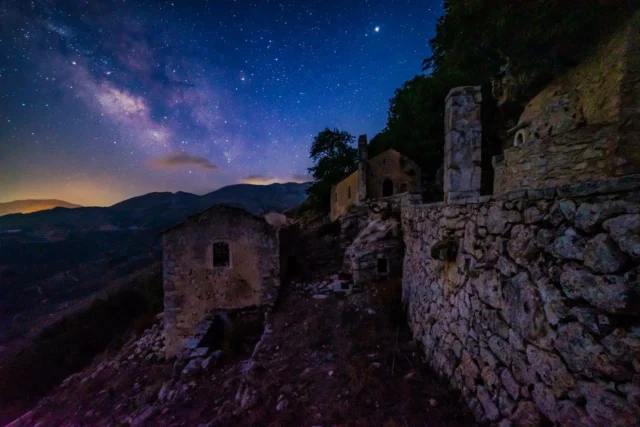


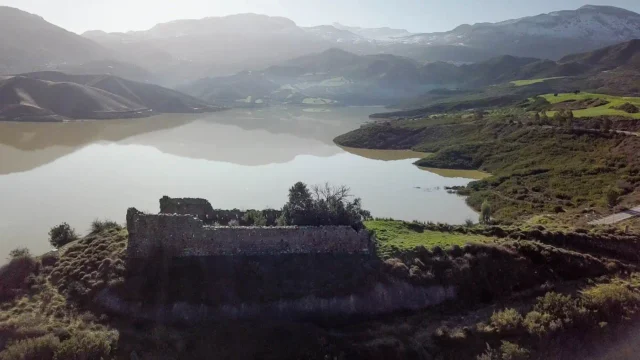

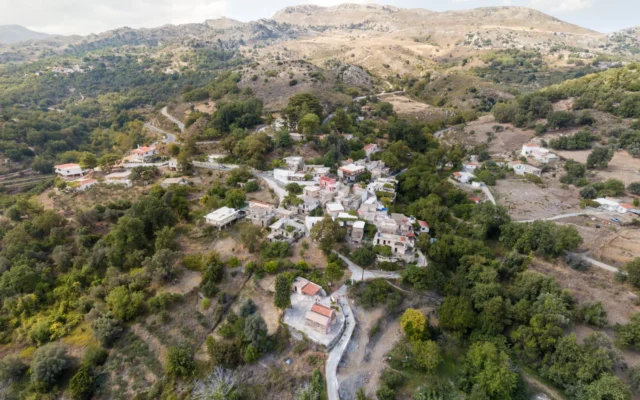

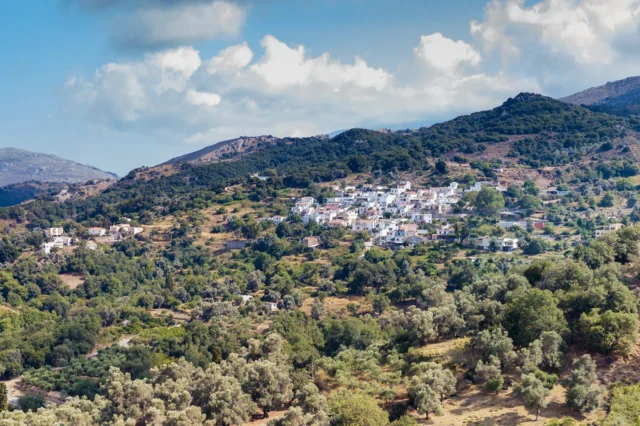
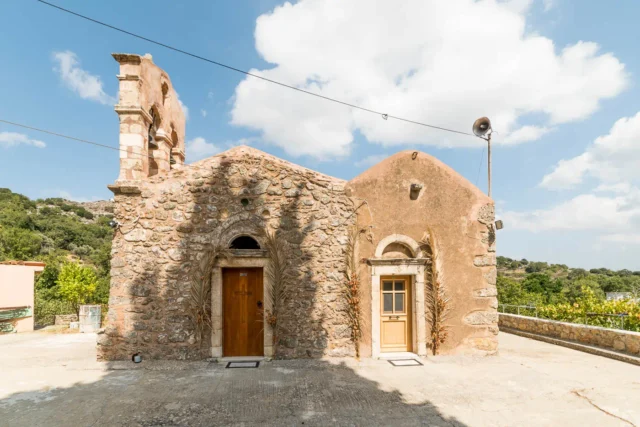

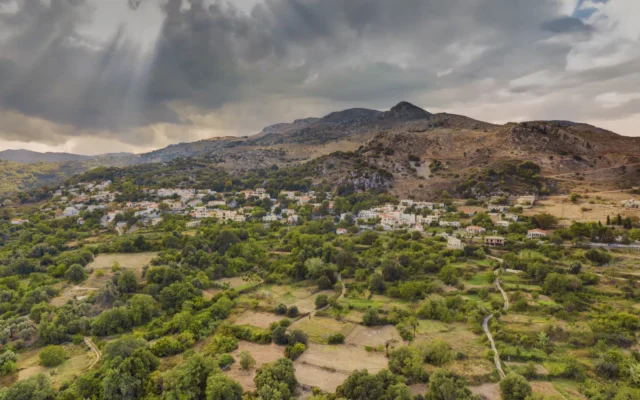

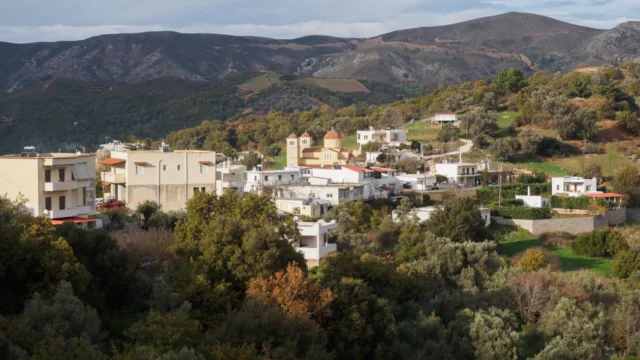
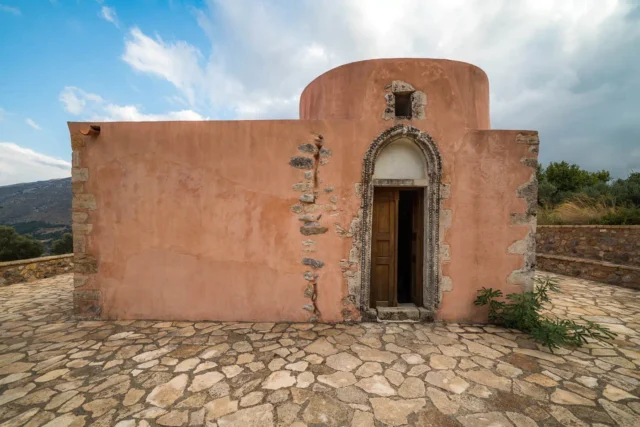
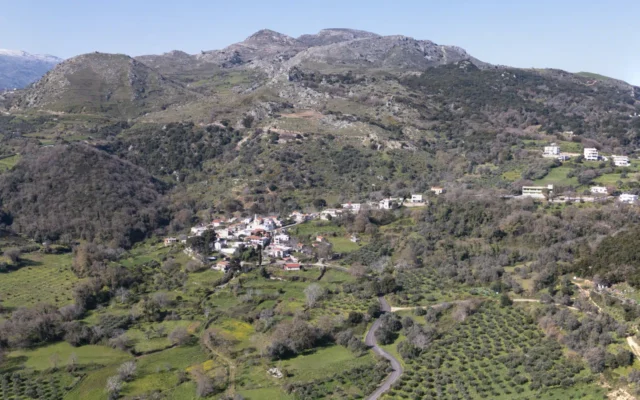
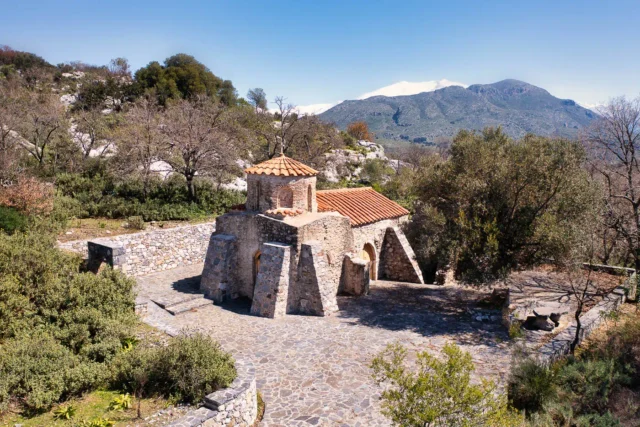

There are no comments yet.